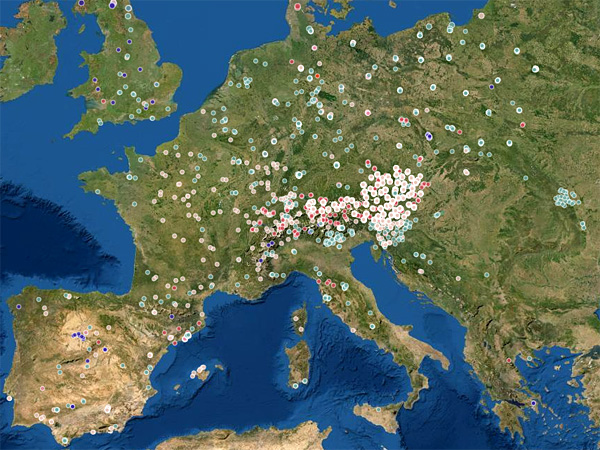MASTREE+ platform provides time-series of reproductive effort of plants from all over the world
Significant gaps remain in understanding the response of plant reproduction to environmental change. This is partly because measuring reproduction in long-lived plants requires direct observation over many years, preferably decades, and such datasets have rarely been collected and made publicly available.
The newly established MASTREE+ database aims to help analyse the data that has been collected so far. The database provides detailed information on the generative reproduction (e.g. number of seeds, number of fruits, etc.) of perennial plants growing all over the world, in some cases, going back many decades. The database was created by a large international team of researchers led by Andrew Hacket-Pain from the University of Liverpool. Our Institute was represented by three scientists: Magdalena Żywiec, Barbara Seget and Łukasz Piechnik. The database has been featured in the Global Change Biology journal. At the time of publication, it contained 73,828 observations for 5971 populations and 974 species of perennial plants from 66 countries. The average length of the time-series was 12.4 years, with as many as 1122 such series covering at least two decades. According to the authors, MASTREE+ is to be a platform for collecting and sharing data enabling research on the relationship between the reproduction of perennial plants and environmental changes, and in the longer term, forecasting demographic processes in these plants.
See the original article:
Hacket-Pain A., Foest J.J., Pearse I.S., LaMontagne J.M., Koenig W.D., Vacchiano G., Bogdziewicz M., Caignard T., Celebias P., van Dormolen J., Fernández-Martínez M., Moris J.V., Palaghianu C., Pesendorfer M., Satake A., Schermer E., Tanentzap A.J., Thomas P.A., Vecchio D., Wion A.P., Wohlgemuth T., Xue T., Abernethy K., Aravena Acuña M.-C., Daniel Barrera M., Barton J.H., Boutin S., Bush E.R., Donoso Calderón S., Carevic F.S., de Castilho C.V., Manuel Cellini J., Chapman C.A., Chapman H., Chianucci F., da Costa P., Croisé L., Cutini A., Dantzer B., Justin DeRose R., Dikangadissi J.-T., Dimoto E., da Fonseca F.L., Gallo L., Gratzer G., Greene D.F., Hadad M.A., Herrera A.H., Jeffery K.J., Johnstone J.F., Kalbitzer U., Kantorowicz W., Klimas C.A., Lageard J.G.A., Lane J., Lapin K., Ledwoń M., Leeper A.C., Vanessa Lencinas M., Lira-Guedes A.C., Lordon M.C., Marchelli P., Marino S., Schmidt Van Marle H., McAdam A.G., Momont L.R.W., Nicolas M., de Oliveira Wadt L.H., Panahi P., Martínez Pastur G., Patterson T., Luis Peri P., Piechnik Ł., Pourhashemi M., Espinoza Quezada C., Roig F.A., Peña Rojas K., Micaela Rosas Y., Schueler S., Seget B., Soler R., Steele M.A., Toro-Manríquez M., Tutin C.E.G., Ukizintambara T., White L., Yadok B., Willis J.L., Zolles A., Żywiec M., Ascoli D. 2022. MASTREE+: Time-series of plant reproductive effort from six continents. Global Change Biology 28: 3066–3082. DOI

A part of Europe with locations of available time-series – map generated by the MASTREE+ Data Explorer application.
Source: mastreeplus.shinyapps.io/mastreeplus.





